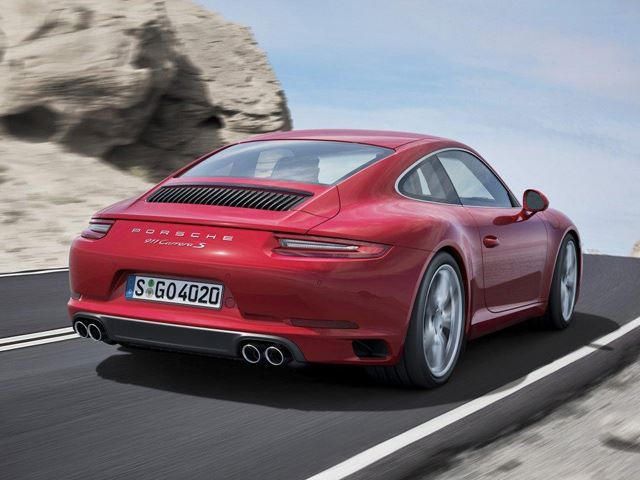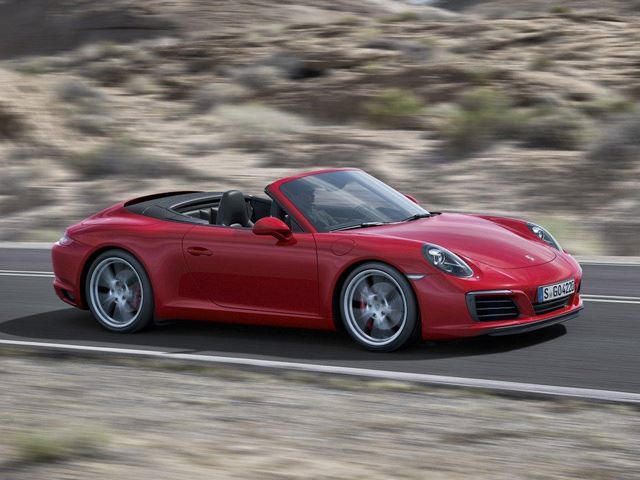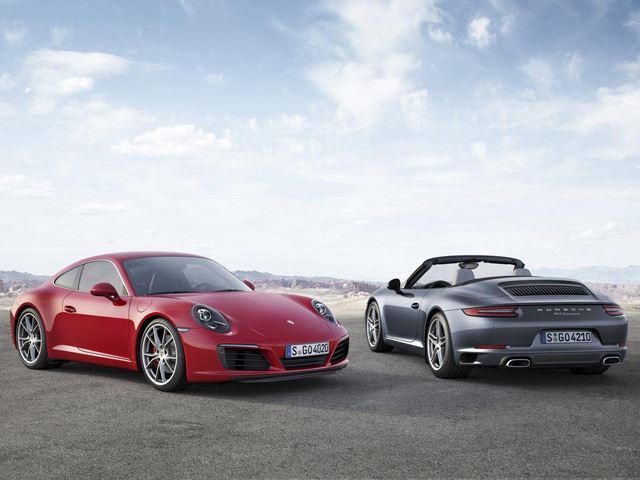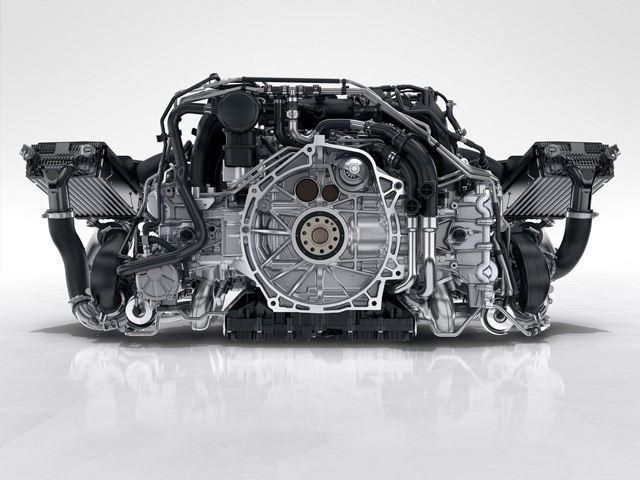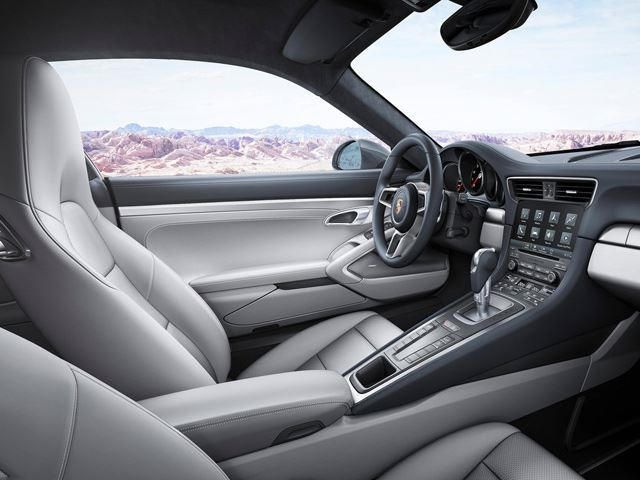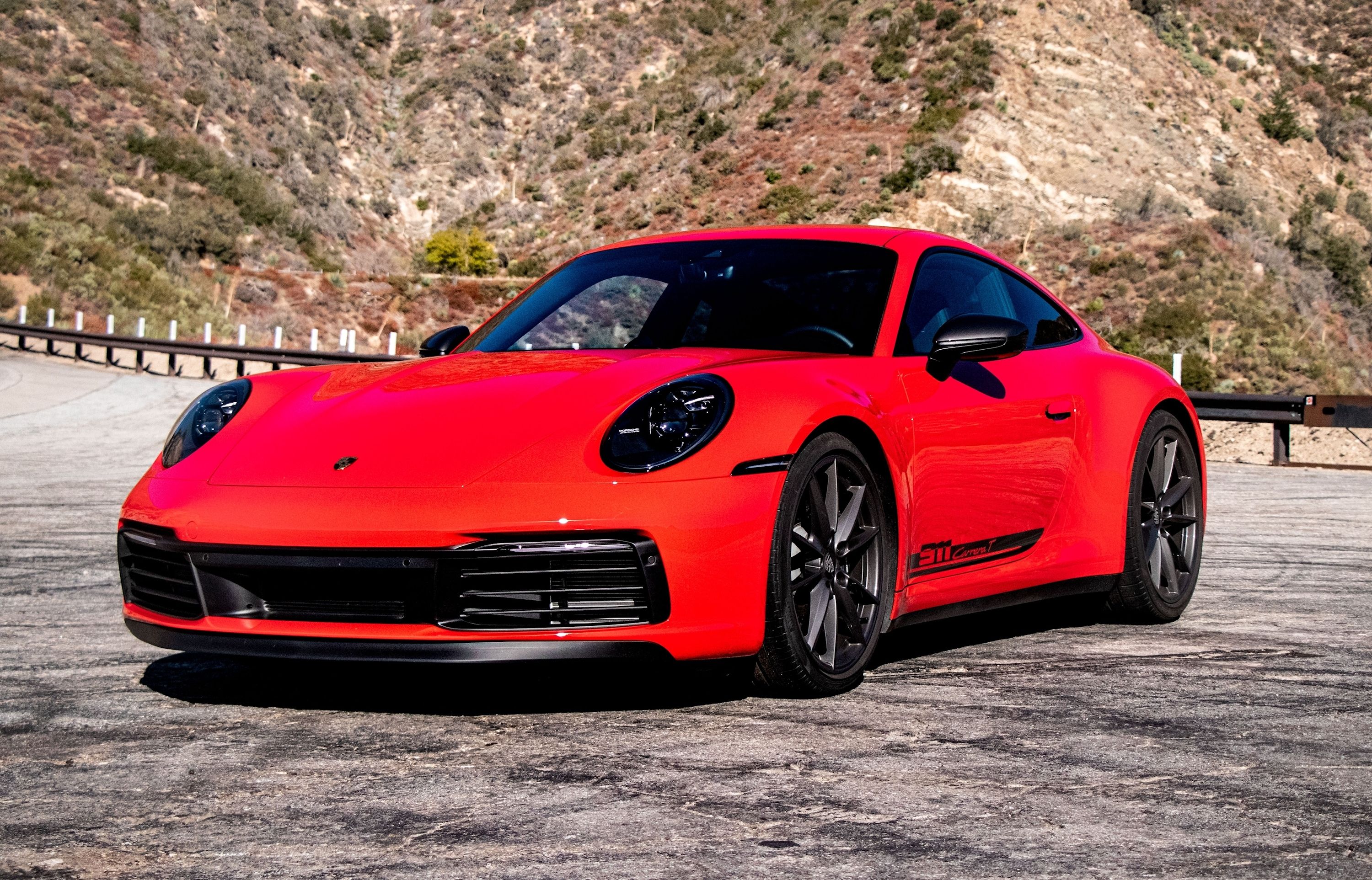
Well, it's finally happened. Porsche has done something the purists will, more than likely, absolutely hate: The beloved 911 has been turbocharged. No, not just the 911 Turbo but the entire 911 range, save for the GT3. That means the base 911 Carrera and Carrera S no longer have a naturally aspirated flat-six. But relax, the world is not coming to an end, at least not over that. The 2016 911 991.2 comes powered by a twin-turbo 3.0-liter flat-six with a standard 370 horsepower and 331 lb-ft of torque, or 420 hp and 368 lb-ft for the Carrera S.
Just to give you an idea of one of the benefits of turbocharging here, both the Carrera and Carrera S now have an additional 20 hp and 44 lb-ft over the previous gen. Translation: power is up and displacement is down. And with extra power comes even greater expectations.
Fortunately, this is Porsche here and surpassing expectations is one of its longtime specialties. The 2016 911 Carrera S is now 10 seconds faster than its immediate predecessor around the famed North Loop of the Nurburgring, clocking in a time of 7 minutes and 30 seconds. But why make the switch to turbos in the first place, aside from the power and performance gain? Well that's simple: emission standards. Same reason for Ferrari's turbocharged present and future. For the new 911, Porsche claims both the Carrera and Carrera S are now 12 percent more efficient than before. But do turbochargers delineate any of the 911's famous rear-engine sound? Turns out, not really, no. Performance specs certainly aren't affected.
The base Carrera, when equipped with the dual-clutch PDK (a seven-speed manual remains available at no extra charge) will go from 0-62 mph in 4.2 seconds and has a top speed of 183 mph. Opt for the Carrera S and you'll hit 62 mph in only 3.9 seconds and get up to 191 mph. The familiar Sport Chrono package remains optional as well, but has a number of upgrades. For example, there's now a mode switch on the steering wheel (like on the 918 Spyder) that consists of a rotary dial with four driving mode positions: Normal, Sport, Sport Plus, and Individual. But what we found interesting is just how much Porsche is somewhat blurring the line between the Carrera S and even higher level 911s.
For example, it can be optioned with the rear-axle steering system from the 911 Turbo and GT3. Along with its beyond impressive performance capabilities, the new Carrera S might just end up being the sweet spot in the entire 911 lineup. Buyers can also check the boxes for features like Adaptive Cruise Control, an automatic speed control system, and lane change assist if they so desire to spend the extra bucks. The interior hasn't been dramatically changed here because, after all, this is a refresh rather than a complete redesign. The most noticeable upgrade is the new seven-inch multi-touch display system. There's even a newly added smartphone tray.
Expect to see the 2016 Porsche 911 arrive in US dealerships this March with a base price of $89,400 for the Carrera. The Carrera S begins at $103,400 while the Cabrio counterparts begin at $101,700 and $115,700 respectively. The Carrera 4, Targa, and Targa S are returning as well. So, is the 911 still a 911 despite its new turbo flat-six? The official verdict is still out but judging by a few early reviews and Porsche simply being Porsche, we have no doubt this new 911 will deliver on all fronts. And remember, once everyone gets used to a fully turbo 911 lineup, something else will be happening in the next few years: a hybrid 911. We can already hear the purists' screams of agony.

